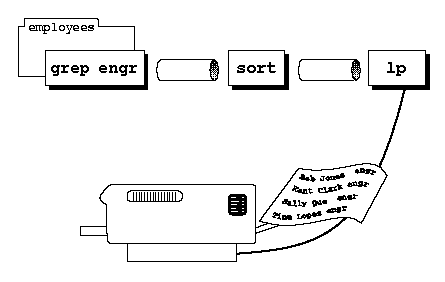
|
|
You can use the pipe symbol (|) on a UNIX system to make the output of one command the input of another. To do this, you type the command you want to generate the input, a pipe symbol, the command you want to read the input, and then press <Enter>. You can use pipes to put together as many commands as you like.

grep engr employees | sort | lp
Earlier in this chapter, you learned how to
print a directory listing by typing:
l > filelist
lp filelist
Doing this with a pipe is even faster:
l filelist | lp
Another way of using a pipe is to put long output through
the more command.
l /etc | more
Try using a pipeline to print a list of the files in your home directory: